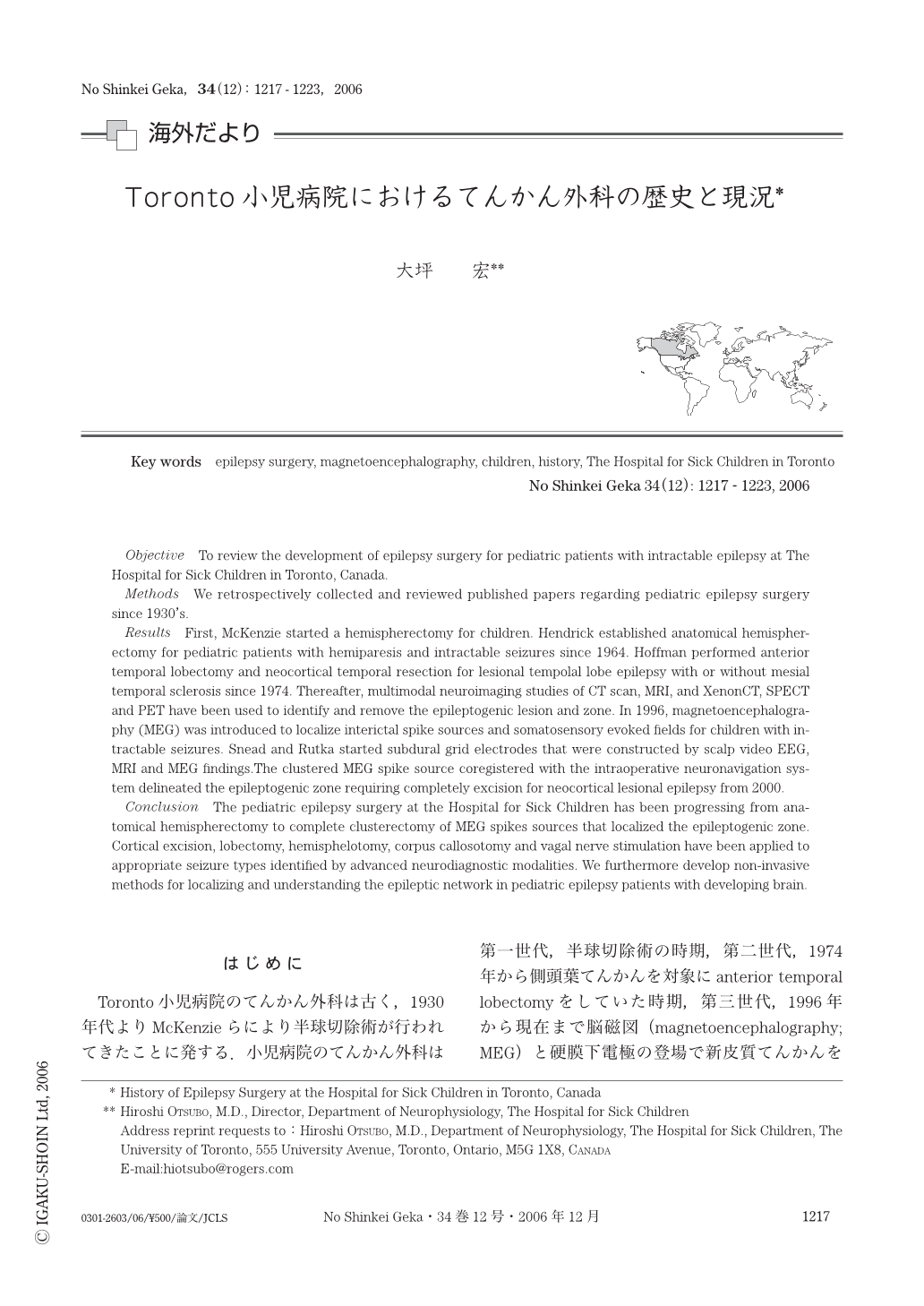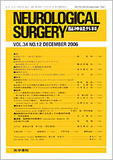Japanese
English
- 有料閲覧
- Abstract 文献概要
- 1ページ目 Look Inside
- 参考文献 Reference
はじめに
Toronto小児病院のてんかん外科は古く,1930年代よりMcKenzieらにより半球切除術が行われてきたことに発する.小児病院のてんかん外科は第一世代,半球切除術の時期,第二世代,1974年から側頭葉てんかんを対象にanterior temporal lobectomyをしていた時期,第三世代,1996年から現在まで脳磁図(magnetoencephalography; MEG)と硬膜下電極の登場で新皮質てんかんを対象とした時期,の3期に分けられる.ここでは,これらの小児てんかんに対するToronto小児病院でのてんかん外科手術の変遷を,発表された論文を渉猟しながら紹介する.
Objective To review the development of epilepsy surgery for pediatric patients with intractable epilepsy at The Hospital for Sick Children in Toronto,Canada.
Methods We retrospectively collected and reviewed published papers regarding pediatric epilepsy surgery since 1930's.
Results First,McKenzie started a hemispherectomy for children. Hendrick established anatomical hemispherectomy for pediatric patients with hemiparesis and intractable seizures since 1964. Hoffman performed anterior temporal lobectomy and neocortical temporal resection for lesional tempolal lobe epilepsy with or without mesial temporal sclerosis since 1974. Thereafter,multimodal neuroimaging studies of CT scan,MRI,and XenonCT,SPECT and PET have been used to identify and remove the epileptogenic lesion and zone. In 1996,magnetoencephalography (MEG) was introduced to localize interictal spike sources and somatosensory evoked fields for children with intractable seizures. Snead and Rutka started subdural grid electrodes that were constructed by scalp video EEG,MRI and MEG findings.The clustered MEG spike source coregistered with the intraoperative neuronavigation system delineated the epileptogenic zone requiring completely excision for neocortical lesional epilepsy from 2000.
Conclusion The pediatric epilepsy surgery at the Hospital for Sick Children has been progressing from anatomical hemispherectomy to complete clusterectomy of MEG spikes sources that localized the epileptogenic zone. Cortical excision,lobectomy,hemisphelotomy,corpus callosotomy and vagal nerve stimulation have been applied to appropriate seizure types identified by advanced neurodiagnostic modalities. We furthermore develop non-invasive methods for localizing and understanding the epileptic network in pediatric epilepsy patients with developing brain.

Copyright © 2006, Igaku-Shoin Ltd. All rights reserved.


